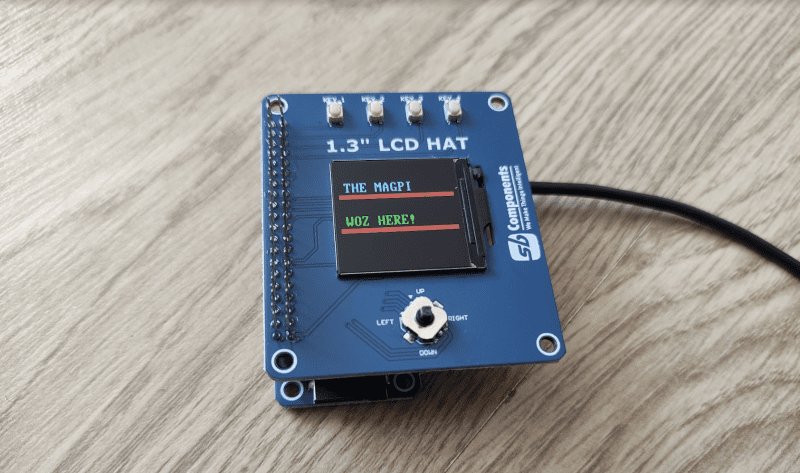Other features include a standard micro-USB port (for 5 V power or connecting to a computer), two tiny push-buttons (including a handy reset), an on-board status LED, and six debug pins.
Plug and play?
That standard 40-pin GPIO header means you can connect any standard Raspberry Pi HAT, pHAT, or other compatible add-on board. The downside is that it’s not a case of plug and play. You will need to adapt any existing software for your HAT to make it work.
SB Components has adapted software for several of its own HATs for StackyPi, available in a GitHub repo (magpi.cc/stackpigh), which also features a handy GPIO pinout comparison chart – it’s very similar to that on a Raspberry Pi, although some GPIO pin numbers are different.
As with Pico, you need to connect the board via micro-USB to a computer to flash the UF2 firmware and program it – using MicroPython, CircuitPython, or C++.
Why use this over a Raspberry Pi Zero? Well, it does offer far lower power consumption and four ADC channels. Alternatively, you could use a Raspberry Pi Pico with a Red Robotics Pico 2 Pi adapter for standard HATs.
Verdict
7/10
Not a plug-and-play solution for HATs, as you’ll need to do some software tinkering, but still a neat little Pico-style board with some bonus features.
Specs
Connectors: 40-pin GPIO header, 6-pin debug header, micro-USB
Storage: 8MB on-board flash, plus microSD card slot
Features: Boot and reset buttons, status LED, 4 × 12-bit ADC channels, PIO, I2C, SPI, UART
Dimensions: 65 × 30 × 10 mm



